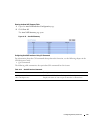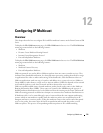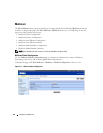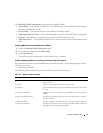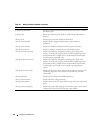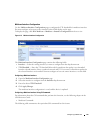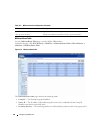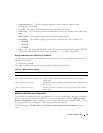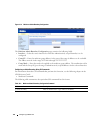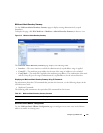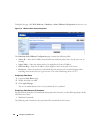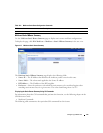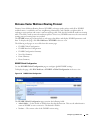
Configuring IP Multicast 721
•
Outgoing Interfaces
— The list of outgoing interfaces on which multicast packets for this
source/group are forwarded.
•
Up Time
— The time in hours:minutes:seconds since the entry was created.
•
Expiry Time
— The time in hours:minutes:seconds before this entry ages out and is removed from the
table.
•
RPF Neighbor
— The IP address of the Reverse Path Forwarding neighbor.
•
ProtocolFlags
— The multicast routing protocol which created this entry. The possibilities are:
–
PIM-DM
–
PIM-SM
–
DVMRP
•
Flags
— The value displayed in this field is valid if the multicast routing protocol running is PIM-SM.
The possible values are RPT or SPT. For other protocols a “------” (no value) is displayed.
Viewing the Multicast Route Table Using CLI Commands
For information about the CLI command that performs this function, see the following chapter in the
CLI Reference Guide:
• Multicast Commands
The following table summarizes the equivalent CLI commands for this feature.
Multicast Admin Boundary Configuration
The definition of an administratively scoped boundary is a way to stop the ingress and egress of multicast
traffic for a given range of multicast addresses on a given routing interface. Use the Multicast Admin
Boundary Configuration
page to configure a new or existing administratively scoped boundary. To see
this page, you must have configured a valid routing interface and multicast.
To display the page, click IPv4 Multicast
→
Multicast
→
Admin Boundary Configuration in the tree
view.
Table 12-3. Multicast Table Command
CLI Command Description
show ip mcast mroute Displays a summary or all the details of the multicast table.
show bridge multicast address-table count Displays statistical information about the entries in the multicast
address table.
show ip mcast mroute group Displays the multicast configuration settings of entries in the multicast
mroute table.
show ip mcast mroute source Displays the multicast configuration settings of entries in the multicast
mroute table.



